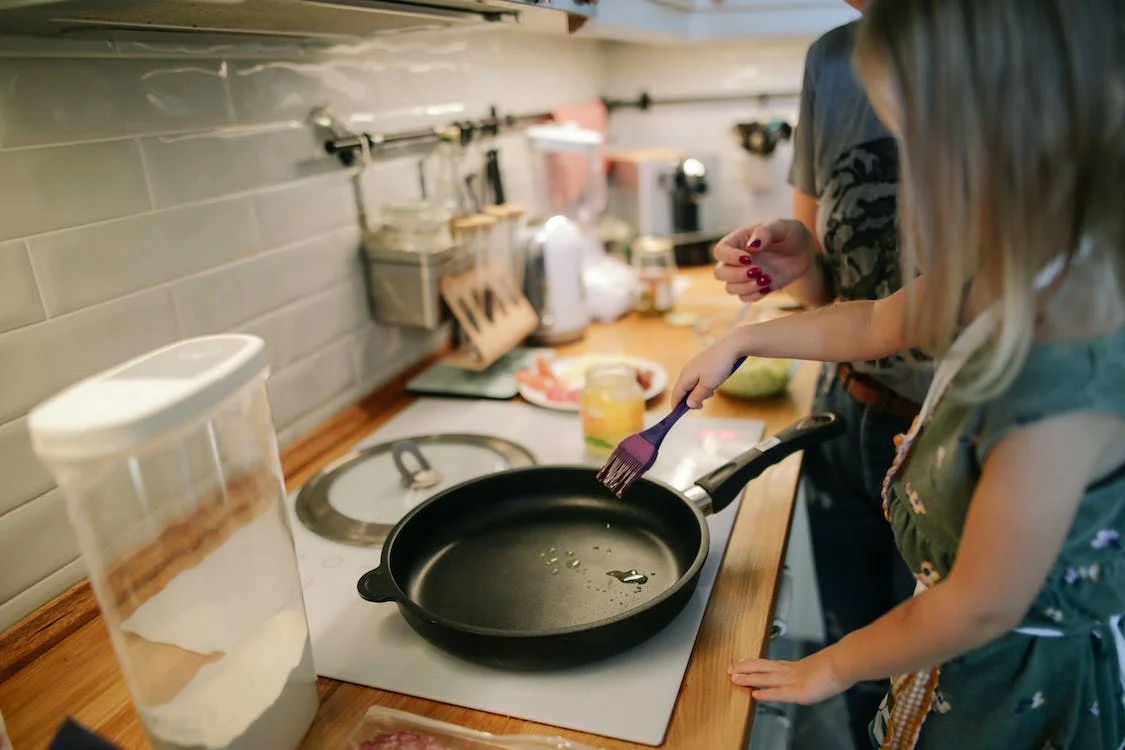Frying pans are essential tools in the kitchen, in them you can prepare eggs, tapioca,vegetables, fry steaks and even more recipes. But there are several models: non-stick, iron, ceramic and even with or without a lid. Lots of options, right? Among them the widely used is non-sticky frying pan.
In this article, we will share a guide on what to look before buying a non-sticky frying pan. These tips not only help you get the best one but also in best affordable price. So read till end to know about frying pans!
How to Choose the Best Nonstick Frying Pan
Before deciding on the best non-stick frying pan to buy, there are some important points that must be taken into account when choosing a quality product. Check out some of them below.
Size
There are non-stick frying pans for all purposes, and one of the characteristics that defines if it is ideal for a certain function is its diameter.
So if you want to find the best frying pan for frying eggs, for example, the 14cm ones are ideal. The best frying pan to prepare an omelet would be from 20 cm.
The larger size options are more suitable for sautéing vegetables or grilling meats, for example.
Diameter
This indicator determines the amount of food that can be cooked at a time. For a family of three, a pan with a diameter of 26 cm will be the best option, for one – 24 cm, and for a large family, you need to purchase a model with a size of 28 cm.
Thickness
The most even distribution of heat will be in pans with a thick bottom and walls, but they will also weigh a lot. Experts advise purchasing models with a minimum thickness of 5 mm. Although 3 mm is also suitable for making pancakes.
Material
The choice of both base and coating material for your new frying pan deserves attention! See below the most suitable for each type of purpose and what are their pros and cons.
Internal
The Inner Material is the one that comes before the non-stick coating on your skillet. It is responsible for the quality of heat conduction and the purpose it should have in the preparation of certain foods.
Frying pans made of aluminum: they are usually more affordable and have a faster, but uneven, heat conduction.
Frying pans with layers of stainless steel and aluminum: they are heavier and have a higher value, being ideal for those looking for good conduction and heat distribution. In addition, they have a great overall performance for all types of preparation, in addition to having greater durability.
Frying pans with ceramic interior: internally, they can be entirely made of this material or contain only one layer. In both cases, the ceramic serves to make a better distribution of heat.
External
The external material is the one responsible for adding the “non-stick power” to the skillet. Meet the two main agents below.
Teflon: Teflon or PTFE (Polytetrafluoroethylene Polymer) is resistant to temperatures up to 315C° and is the most popular material among non-stick coatings. Although it is not the healthiest choice as it releases residues in food over time, it is easily possible to find its “improved” version, which is free of PFOA, a chemical component that causes several health problems.
Ceramic: Ceramic is considered the healthiest alternative among non-stick coating options as it does not release toxic residues in food. However, it is necessary to be aware of its durability, since some brands may have low quality coating on this material, compromising the validity of its non-stick power.
Compatibility With Stove
Although most models of non-stick frying pans are compatible with the most diverse cooking methods, it is important to pay attention to whether it is compatible with the one used in your home.
Therefore, always observe the instructions on the manufacturer’s label before making the purchase!
Oven and dishwasher compatibility
Although non-stick frying pans are already very easy to wash, it is important to pay attention to whether they are dishwasher safe. In addition to indicating that it is a durable product, this prevents future frustrations in the kitchen.
Another important point is compatibility with your oven; If you purchased your skillet for general use, it is important to note that all of its components are oven safe. This factor is very useful for busy days, as well as adding practicality to routine recipes.
